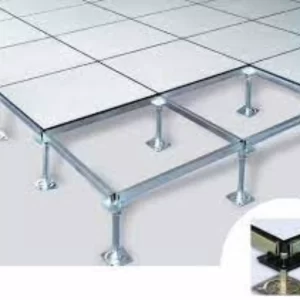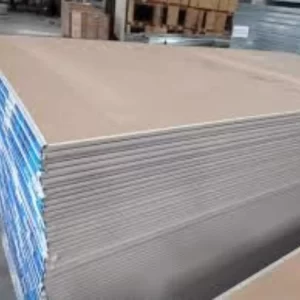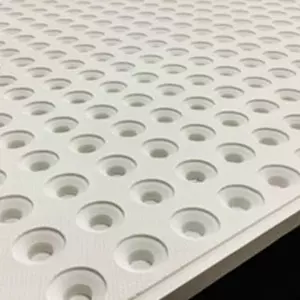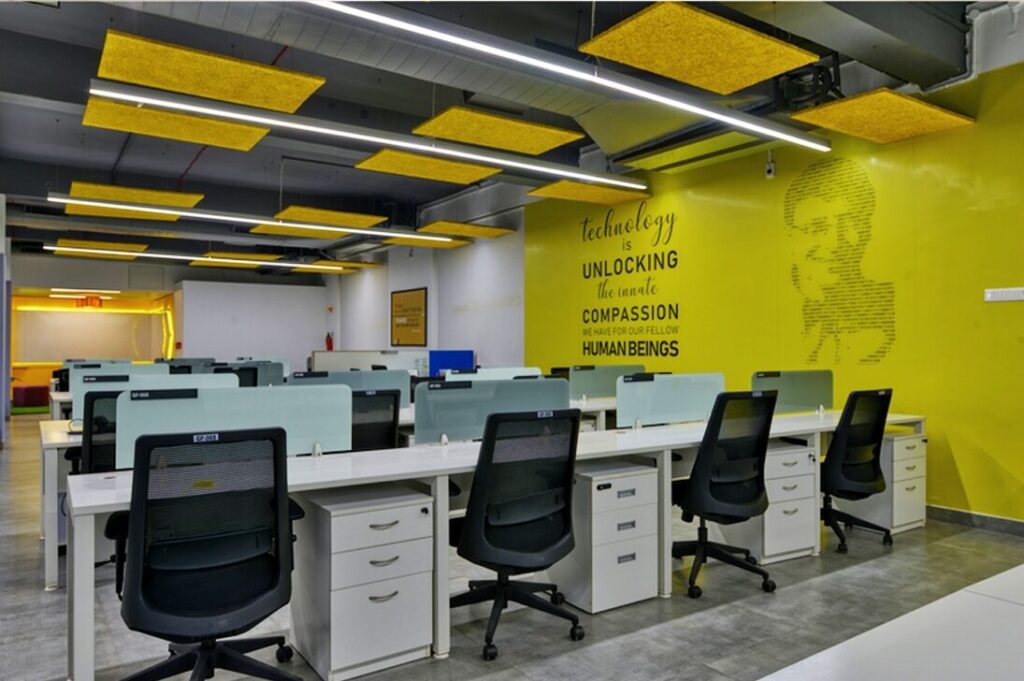The Risks of Raised Access Flooring
Introduction
The Risks of Raised Access Flooring, also known as access floors or raised floors, refers to a system of flooring that is elevated above the building’s structural slab. This construction method creates a space between the structural slab and the raised floor, allowing for the installation of utilities and services. While raised access flooring provides several advantages, it’s crucial to be aware of the potential risks associated with its use.

Understanding Raised Access Flooring
Raised access flooring consists of individual floor panels that are supported by pedestals or adjustable legs. These panels can be easily lifted, providing quick access to the space beneath the floor for maintenance and repairs. The void created by the raised floor serves as a conduit for cables, electrical wiring, HVAC ducts, and other services required in a modern building.
Risk of Structural Failure
One of the significant risks associated with raised access flooring is the potential for structural failure. The weight of the flooring system, combined with the load it carries, can put stress on the building’s structure. Over time, this stress may cause the structural integrity of the floor to weaken, leading to collapses or instability.
Fire Hazards
Raised access flooring can create additional fire hazards if not appropriately managed. The space beneath the floor acts as a pathway for the spread of fire, smoke, and toxic gases. In the event of a fire, it can be challenging to identify and extinguish the source quickly. Moreover, if the flooring materials are flammable or not properly fire-rated, they can contribute to the rapid spread of fire.
Electrical Issues
With a multitude of cables and electrical wiring running beneath raised access flooring, there is an increased risk of electrical issues. Improper installation, damaged cables, or faulty connections can lead to power failures, short circuits, or even electric shocks. These issues can disrupt business operations, damage equipment, and pose a safety hazard to occupants.
Poor Indoor Air Quality
Another risk associated with raised access flooring is the potential for poor indoor air quality. If not adequately maintained, the void beneath the flooring can accumulate dust, dirt, and other pollutants. Over time, these contaminants can circulate through the building’s ventilation system, negatively affecting the air quality and potentially causing health problems for occupants.
Water Damage and Flooding
In the event of water leaks or flooding, raised access flooring can be vulnerable to water damage. If water seeps into the void beneath the floor, it can damage the cables, electrical systems, and other utilities. Water damage can lead to costly repairs, prolonged downtime, and significant disruptions to business operations.
Trip and Slip Hazards
Uneven or damaged floor panels in raised access flooring can pose trip and slip hazards. If a panel becomes loose or breaks, it creates an uneven surface that can cause people to stumble or fall. These accidents can result in injuries, affecting both employees and visitors in the building.
Health and Safety Concerns
Various health and safety concerns are associated with raised access flooring. These include exposure to harmful chemicals during installation or maintenance, ergonomic issues due to frequent bending and kneeling, and the potential for accidents when working in confined spaces. It is crucial to address these concerns to ensure the well-being of individuals working with or around raised access flooring.
Maintenance Challenges
Maintaining raised access flooring can be challenging due to the complexity of the system and the diverse range of services running beneath it. Regular inspections, cleaning, and repairs are necessary to ensure the floor’s integrity and functionality. Failure to address maintenance needs promptly can result in costly repairs, system failures, and increased risks.
Environmental Impact
The production and disposal of raised access flooring materials can have a significant environmental impact. The manufacturing process often involves the use of energy-intensive materials, and improper disposal can lead to pollution and waste accumulation. It is essential to consider sustainable alternatives and proper disposal methods to minimize the environmental risks associated with raised access flooring.
Mitigating the Risks
While there are risks involved with raised access flooring, it is possible to mitigate them effectively through proactive measures. Here are some strategies to consider:
- Regular Inspections and Maintenance: Implement a comprehensive inspection and maintenance program to identify and address any issues promptly.
- Training and Awareness: Provide training to employees and contractors who work with or around raised access flooring. Increase awareness of potential risks and best practices for safe operations.
- Fire Safety Measures: Install fire-rated materials and implement appropriate fire suppression systems to minimize the risk of fire hazards.
- Moisture Prevention: Take steps to prevent water leaks and flooding, such as sealing gaps, installing moisture barriers, and implementing proper drainage systems.
- Proper Installation: Ensure raised access flooring is installed correctly by qualified professionals, following industry standards and manufacturer guidelines.
Conclusion – The Risks of Raised Access Flooring
Raised access flooring offers numerous benefits, but it is essential to be aware of the potential risks associated with its use. Structural failure, fire hazards, electrical issues, poor indoor air quality, and maintenance challenges are among the risks that need careful consideration. By implementing proactive measures and adhering to best practices, the risks can be effectively mitigated, ensuring a safe and functional environment.
Frequently Asked Question- The Risks of Raised Access Flooring
- Is raised access flooring suitable for all types of buildings?
Answer: Raised access flooring is suitable for various types of buildings, including offices, data centers, and commercial spaces. However, it is essential to consider specific requirements and consult with professionals to determine its suitability for a particular project. - Can raised access flooring support heavy equipment?
Answer: Raised access flooring can support heavy equipment, but it is crucial to ensure that the floor’s load-bearing capacity meets the equipment’s weight requirements. Engineering calculations and professional consultation are necessary to determine the system’s suitability. - What maintenance tasks are involved with raised access flooring?
Answer: Maintenance tasks for raised access flooring include regular inspections, cleaning, and repairs. It is important to address any damaged or loose floor panels, check for water leaks, and ensure the proper functioning of utilities running beneath the floor. - Are there any eco-friendly alternatives to raised access flooring?
Answer: Yes, there are eco-friendly alternatives to traditional raised access flooring. These include sustainable flooring materials, such as recycled or renewable resources, and modular systems designed for easy installation, reconfiguration, and recycling. - How often should raised access flooring be inspected? Raised access flooring should be inspected regularly, at least once or twice a Answer: year, depending on the building’s usage and environmental conditions. Additional inspections may be necessary after significant events like water leaks or renovations.
Other Products

Gypsum boards

Magnesium oxide board

Grg ceiling tiles
Contact Us
Mobile: +919008400701 / 705
Email: sales@jayswalgroup.com

Visit Us
Address:
#6, 10th B Cross, Jayswal Center, KHB Main Road, Kaveri Nagar, Kanakanagar, RT Nagar, Bangalore – 560032, Karnataka, India.
Other Websites: